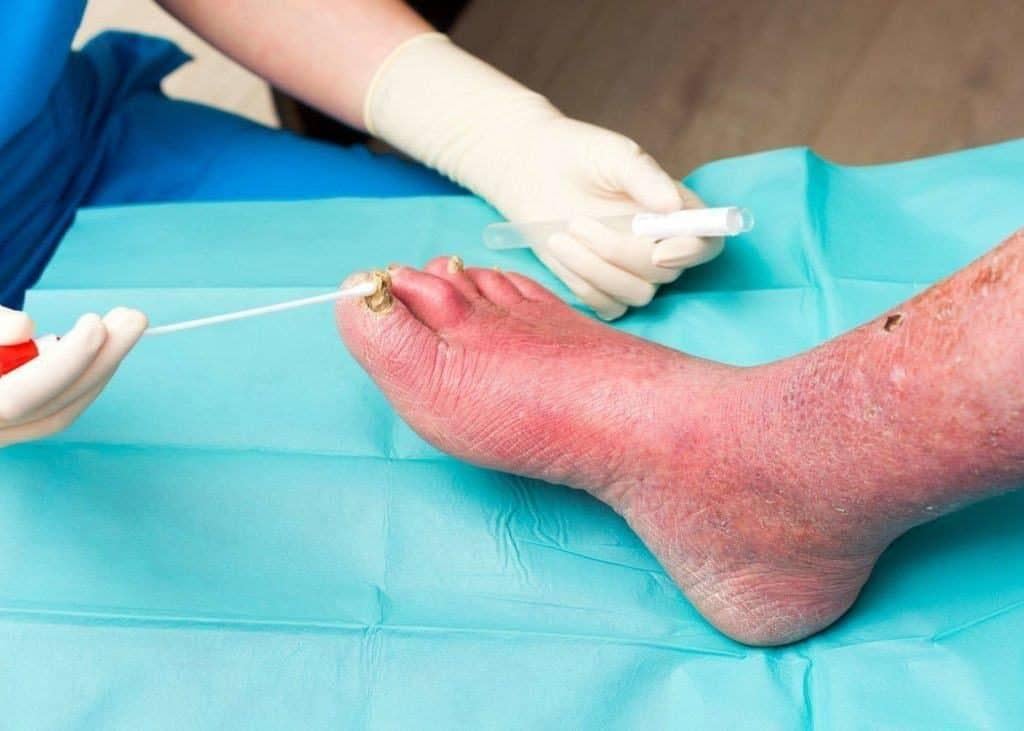What are Some Complications on Feet Caused by Diabetes?
In diabetics, foot complications due to neuropathy or circulatory difficulties can make wounds and ulcers more difficult to heal. This slow healing condition can cause infection. Other foot problems, such as calluses, are also common in people with diabetes. Although calluses may not seem worrying, if left unchecked, this condition can turn into an open ulcer or wound. People with diabetes are also at risk of developing Charcot, a condition in which the joints that support weight gain progressively damage, causing loss of bone mobility.

Because of nerve damage, people with diabetes cannot immediately see that there is a problem with their feet. Over time, people with diabetic neuropathy can experience incurable foot problems and this condition can make the legs amputated.
What are the causes of foot problems caused by diabetes?
High blood sugar levels in people with uncontrolled diabetes can cause numb neuropathy and loss of sensation due to nerve damage. People with diabetic neuropathy cannot feel pain like other normal people, who do not experience nerve damage.
If the wound is not examined immediately and the infection suddenly becomes very serious, eventually amputation is needed.
People with diabetes can also experience poor circulatory conditions on their feet, which slows down the healing process when their feet are injured. Any wound that is slowly cured can increase the risk of infection, because bacteria can easily enter open wounds and cut wounds.
Examine the feet for calluses, pain, sores, and so on are very important parts of diabetes care. However, according to an article in Diabetic Medicine, "A number of surveys and studies have reported that 23% -63% [of diabetics] rarely check their feet or not at all." Another important part of treatment and prevention is to examine your feet every visit to the doctor, and test your foot sensation level for once per year.
Everyone with diabetes must be proactive, such as asking questions. Work with your doctor to find out guidelines for foot care, to help prevent complications before they occur.
How can I prevent foot complications?
In addition to following a diet that can control blood sugar, there are several steps that diabetics can do to prevent foot complications. To increase blood flow to the lower parts of the body, diabetics must walk regularly in a sturdy, comfortable way, using closed shoes or sneakers. Exercising also reduces hypertension and makes weight loss very important for blood circulation.
Check your feet regularly for any changes, including pain, sores, or skin ulcers. Open wounds, scars, or cuts to the feet should be reported to the doctor immediately. To keep your feet healthy, follow these tips:
- Check your feet every day, including between the toes.
- Visit a doctor if you see cuts, open sores, internal injuries, ulcers, redness, swelling, hot areas, or disabilities.
- Don't walk barefoot, even around the house. Small injuries can turn into big problems. Walking on hot pavements without shoes can cause damage that may not be felt.
- Don't smoke, because it narrows blood vessels and contributes to poor blood circulation.
- Keep your feet clean and dry, do not soak your feet. Dry your feet; do not rub.
- Sprinkle after cleaning, but not between toes.
- Avoid hot water; check the temperature of the pool water with your hands, not your feet.
- Cut toenails after taking a shower. Cut straight and then blend with a soft nail file. Check for sharp edges and cuticles that have never been cut.
- Use pumice stone to relieve calluses. Never cut your own calluses, or use chemical drugs on the market.
- Visit a podiatrist for additional nails and fine treatments.
- Wear shoes properly and fibrous socks (for example, cotton or wool). Do not wear new shoes for more than an hour at a time and carefully check your feet after removing shoes. Check inside your shoes for prominent areas or other objects before you wear them.
- Avoid high heels and pointed shoes.
- If your feet are cold, warm them with socks.
- Shake your toes and move your ankles while sitting.
- Don't cross your legs, because this can complicate blood flow.
- Keep your legs and lift your legs if you have an injury.
Possibility for diabetics to avoid foot complications can occur if they are diligent and maintain healthy blood sugar levels. However, daily foot checks are also important.